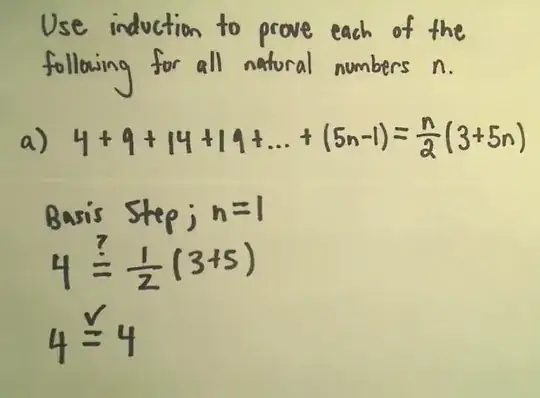Hi I wrote a formula to know the 100th term for the following sequence: $$3, 10, 17, 24, 31$$
Note that each following number in the sequence will be 7 more than the previous number.
And here is the formula: $$7N - 4$$ $$ \begin{array}{c|c} Term & 1 & 2 & 3 & 4 & 5 & Nth & 100 \\ \hline Number & 3 & 10 & 17 & 24 & 31 & 7\times N - 4 & 696 \\ \end{array} $$
I proved it with the base case $$5 \times 7 - 4 = 31$$
which is correct. And I proved it with$$100\times7 - 4 = 696,$$ which is correct.
Also I was looking at this induction example:
So that I can apply on my own induction. But the problem is I can't really apply it, because I don't know what to assume/claim to prove it. This is where I'm stuck:
$$ \mathrm{Induction \enspace step; \enspace Assume \enspace true \enspace for \enspace n=k, \enspace show \enspace true \enspace n=k+1} $$ $$ \mathrm{Assume: 3,10,17,24,...,[WHAT \enspace DO \enspace I \enspace NEED \enspace TO \enspace WRITE \enspace HERE?] = 7N-4} $$
Does someone has any idea what I need to write in the above assumption? Thanks in advance.

